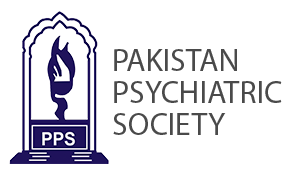PREVALENCE OF PSYCHOACTIVE SUBSTANCE USE AMONG SECURITY GUARDS AT TERTIARY CARE HOSPITAL: A CROSS-SECTIONAL STUDY
Abstract
Introduction: Drug addiction is a prevalent problem in Pakistan, and screening tools are available for diagnosis. Seeking guidance from healthcare professionals is important for appropriate treatment. Assessing addiction among security personnel is important for safety and policy formulation
Aims & Objectives: This cross-sectional study aims to investigate drug addiction screening and its correlates among security guards in a tertiary care hospital.
Materials & Methods: This cross-sectional study was conducted at Sheikh Zayed Medical College/Hospital in Rahim Yar Khan, Pakistan. Purposive convenience sampling was used to select a sample size of 184
Results: The study conducted among 184 security guards showed significant associations between gender, marital status, and age categories. A considerable proportion of guards were found to be overweight, had increased blood pressure, and substance use in the form of nicotine-related substances was found to be The study highlights the need for interventions promoting healthy lifestyles and substance use education and prevention efforts among security guards in such settings.
Conclusion: This study revealed a prevalence of substance use among security guards in a tertiary care hospital in Pakistan and identified the need for interventions to promote healthy lifestyles and substance use education/prevention. Seeking guidance from healthcare professionals and implementing public health initiatives to address drug addiction and promote healthy lifestyles among security personnel are crucial.
Downloads
References
Saunders JB, Latt NC. Diagnostic Definitions and Classification of Substance Use Disorders. In: el-Guebaly N, Carrà G, Galanter M, Baldacchino AM, editors. Textbook of Addiction Treatment-International Perspectives . 2nd ed. Springer Cham; 2021. p. 91–113.
UNODC World Drug Report 2021: Pandemic effects ramp up drug risks, as youth underestimate cannabis dangers [Internet]. United Nations Office on Drugs and Crime; 2021 [cited 2023 April 2024]. Available from: https://www.unodc.org/unodc/press/releases/2021/June/unodc-world-drug-report-2021_-pandemic-effects-ramp-up-drug-risks--as-youth-underestimate-cannabis-dangers.html
Smoking - level 3 risk [Internet]. University of Washington; [cited 2023 April 24]. Available from: https://www.healthdata.org/results/gbd_summaries/2019/smoking-level-3-risk
Alcohol use - level 2 risk [Internet]. University of Washington; [cited 2023 April 24]. Available from: https://www.healthdata.org/results/gbd_summaries/2019/alcohol-use-level-2-risk
Drug use disorders - level 3 cause [Internet]. University of Washington; [cited 2023 April 24]. Available from: https://www.healthdata.org/results/gbd_summaries/2019/drug-use-disorders-level-3-cause
Imtiaz S, Nafeh F, Russell C, Ali F, Elton-Marshall T, Rehm J. The impact of the novel coronavirus disease (COVID-19) pandemic on drug overdose-related deaths in the United States and Canada: a systematic review of observational studies and analysis of public health surveillance data. Subst Abuse Treat Prev Policy. 2021;16(1):87. doi:10.1186/s13011-021-00423-5
Palamar JJ, Ciccarone D, Rutherford C, Keyes KM, Carr TH, Cottler LB. Trends in seizures of powders and pills containing illicit fentanyl in the United States, 2018 through 2021. Drug Alcohol Depend. 2022;234:109398. doi:10.1016/j.drugalcdep.2022.109398
Special Advisory Committee on the Epidemic of Opioid Overdoses. Opioid- and stimulant-related harms in Canada. Ottawa: Public Health Agency of Canada; 2022.
UK Office for National Statistics. Deaths related to drug poisoning in England and Wales: 2021 registrations. London: UK Office for National Statistics; 2021.
Bergenstrom A, Achakzai B, Furqan S, ul Haq M, Khan R, Saba M. Drug-related HIV epidemic in Pakistan: a review of current situation and response and the way forward beyond 2015. Harm Reduct J. 2015;12:43. doi:10.1186/s12954-015-0079-5
Farhoudian A, Radfar SR, Mohaddes Ardabili H, et al. A Global Survey on Changes in the Supply, Price, and Use of Illicit Drugs and Alcohol, and Related Complications During the 2020 COVID-19 Pandemic. Front Psychiatry. 2021;12:646206. Published 2021 Aug 6. doi:10.3389/fpsyt.2021.646206
Parmar A, Bhatia G, Sharma P, Pal A. Understanding the epidemiology of substance use in India: A review of nationwide surveys. Indian J Psychiatry. 2023;65(5):498-505. doi:10.4103/indianjpsychiatry.indianjpsychiatry_791_22
Wu LT, Schlenger WE, Galvin DM. The relationship between employment and substance use among students aged 12 to 17. J Adolesc Health. 2003;32(1):5-15. doi:10.1016/s1054-139x(02)00447-0
Larson SL, Eyerman J, Foster MS, Gfroerer JC. Worker Substance Use and Workplace Policies and Programs. Rockville MD: Substance Abuse and Mental Health Services Administration Office of Applied Studies; 2007. (DHHS publication no. SMA 07-4273, analytic series A-29)
Biancarelli DL, Biello KB, Childs E, et al. Strategies used by people who inject drugs to avoid stigma in healthcare settings. Drug Alcohol Depend. 2019;198:80-86. doi:10.1016/j.drugalcdep.2019.01.037
Livingston M, Callinan S, Raninen J, Pennay A, Dietze PM. Alcohol consumption trends in Australia: Comparing surveys and sales-based measures. Drug Alcohol Rev. 2018;37 Suppl 1:S9-S14. doi:10.1111/dar.12588
Hasan SS, Shaikh A, Ochani RK, et al. Perception and practices regarding cannabis consumption in Karachi, Pakistan: A cross-sectional study. J Ethn Subst Abuse. 2021;20(3):471-489. doi:10.1080/15332640.2019.1667287
Mir MU, Khan I, Ahmed B, Abdul Razzak J. Alcohol and marijuana use while driving--an unexpected crash risk in Pakistani commercial drivers: a cross-sectional survey. BMC Public Health. 2012;12:145. doi:10.1186/1471-2458-12-145
Rao JV, Chandraiah K. Occupational stress, mental health and coping among information technology professionals. Indian J Occup Environ Med. 2012;16(1):22-26. doi:10.4103/0019-5278.99686
Bag A. Experiences of stress by law enforcement officers: a study of Kolkata Police. International Research journal of Management Sociology & Humanities. 2023;14(3): 35 – 146. doi: https://doi.org/10.32804/IRJMSH
Nguyen HV, Vu TT, Pham HN. Factors associated with drug use among male motorbike taxi drivers in urban Vietnam. Subst Use Misuse. 2014;49(10):1287-1295. doi:10.3109/10826084.2014.891624
Arfines PP, Rachmalina R, Mubasyiroh R, Puspita T, Arfines FAR. Prevalence of Indonesia's alcohol consumption, risk factors, and its cluster mapping: an analysis of Indonesia Basic Health Survey 2018. Gizi Indon. 2022;45(2):183-196. doi: 10.36457/gizindo.v45i2.742.
Back SE, Lawson KM, Singleton LM, Brady KT. Characteristics and correlates of men and women with prescription opioid dependence. Addict Behav. 2011;36(8):829-834. doi:10.1016/j.addbeh.2011.03.013
Copyright © JPPS. Published by Pakistan Psychiatric Society
Licensing: This work is licensed under Creative Commons Attribution-NonCommercial 4.0 International License
Readers may “Share-copy and redistribute the material in any medium or format” and “Adapt-remix, transform, and build upon the material”. The readers must give appropriate credit to the source of the material and indicate if changes were made to the material. Readers may not use the material for commercial purposes. The readers may not apply legal terms or technological measures that legally restrict others from doing anything the license permits.






.png)









